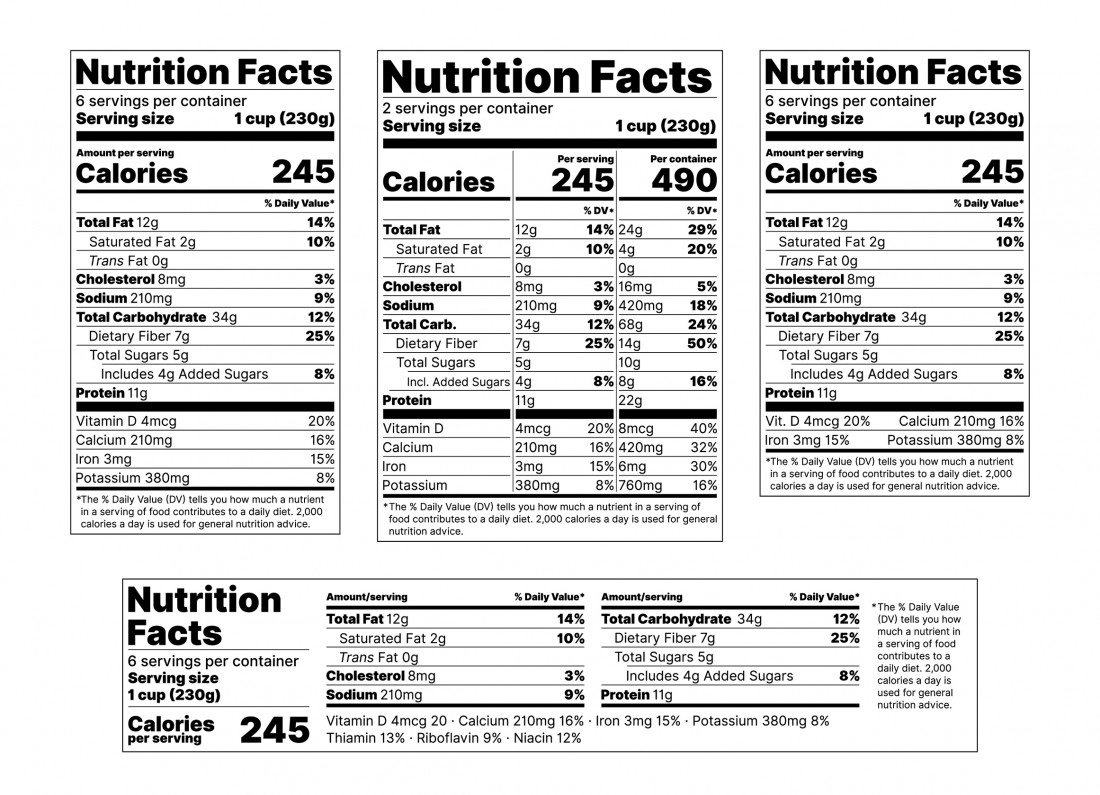Firstly, Merry Christmas to everyone and I hope you had an enjoyable one. Now it’s time to bring in the New Year and pay a little bit more attention to our food choices, which leads us onto today’s topic: food labelling.
You may have seen on the news or online about researchers involved in a new study suggesting converting calories into the amount of exercise needed to burn them off.
For example, labels explaining that you would need to run for:
• 13 minutes after drinking a 330ml can of fizzy drink.
• 22 minutes after eating a standard size chocolate bar.
• 42 minutes after eating a shop-bought chicken and bacon sandwich.
You might also think this is a great idea, but I beg to differ. We need to look at research that was carried out. Researchers analysed data from 14 randomised controlled trials that compared people’s behaviour when the Physical Activity Calorie Equivalent (PACE) labels were used versus no labels or a standard calorie label.
Eight trials queried participants on what foods they’d hypothetically order from a menu. Another trial assessed which foods participants would purchase. In these nine trials, researchers determined that when PACE labelling was present, participants selected or purchased foods that were 65 calories less, on average, compared with when PACE labelling was not present. Yet in these trials study authors did not follow participants to see how much they went on to consume.
Five additional trials did assess how many calories participants consumed when PACE labelling was used, when only calorie labelling was used, and when no labels were used. Researchers observed that PACE labelling resulted in participants consuming 80 to 100 fewer calories compared with when no labelling was used. Nonetheless, the PACE labelling didn’t result in lower calorie consumption compared to the calorie-only labelling.
As these trials where carried out in the laboratory’s controlled environment, further research needs to be carried out in real life situation: for example meeting friends in the coffee shop or eating out in a restaurant, to determine if PACE labelling does affect our decision making.
In theory it does have its benefits. Even if it makes people think twice about their food choices and the quantity of food they will consume, then I’m all for it. But unfortunately I don’t think it will have that effect plus I’m sure the smart business people from the big food companies will manipulate the PACE labelling in some to keep sales up.
For me it comes down to education and a balanced diet.
If we are educating people on food choices based on calorie intake, remembering that not all calories are created equal, then it may be a false way for people to make healthy choices.
This was perfectly summarised by Dr Frankie Phillips, a registered dietician and spokesperson for the British Dietetic Association, who said, “For example, calories labelled on a sandwich might come to around 400kcal whereas a chocolate confectionery bar might be 350kcal. If calories are given central importance then the chocolate bar would appear to be a better choice, whereas a more balanced approach would obviously show that a sandwich is far superior nutritionally, despite being higher in calories.”
If you were comparing it to exercise, would you rather choose food which meant you had to walk 60 minutes or 45 minutes? I know which one I would pick.
If we pick what, when and how much we eat through an educated decision, then we would all make better food choices. I can see what the PACE labelling is trying to achieve as there is so many choices of easily accessible, convenient and cheap nutritionally condensed foods. Add to this our lack of real and ever changing nutritional information (which I find hard to keep track of) the PACE labelling systems is trying to keep it simple.
Other facts which need to be considerate are a person’s current weight and how we all burn calories at different rates. There is also the negative physical effect it can have on people with eating disorders or those who stick to the guidelines and don’t burn-off their calories.
I would suggest we use PACE labelling as an extra tool to help us make better food choices. It’s not the magic formula which is going to cure society’s obesity epidemic, but used in the right way with further research it can help steer us towards making better choices.
There will be times in our life, for example over the Christmas period when we make poorer food choices, but mainly it’s about being smarter and disciplined in what, when, and how much we eat.
Receive quality journalism wherever you are, on any device. Keep up to date from the comfort of your own home with a digital subscription.
Any time | Any place | Anywhere
SUBSCRIBE TO CURRENT EDITION TODAY
and get access to our archive editions dating back to 2007(CLICK ON THE TITLE BELOW TO SUBSCRIBE)









